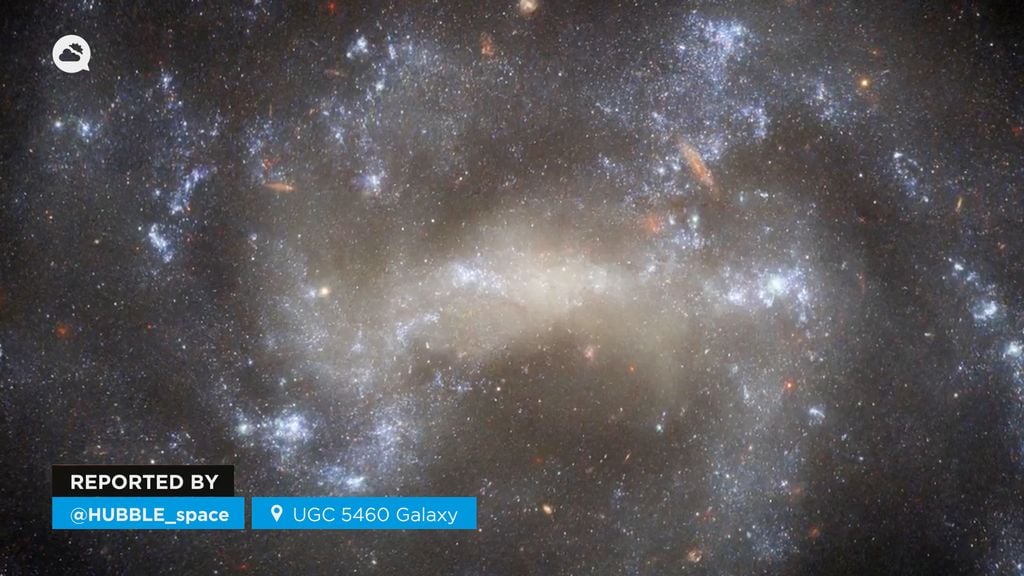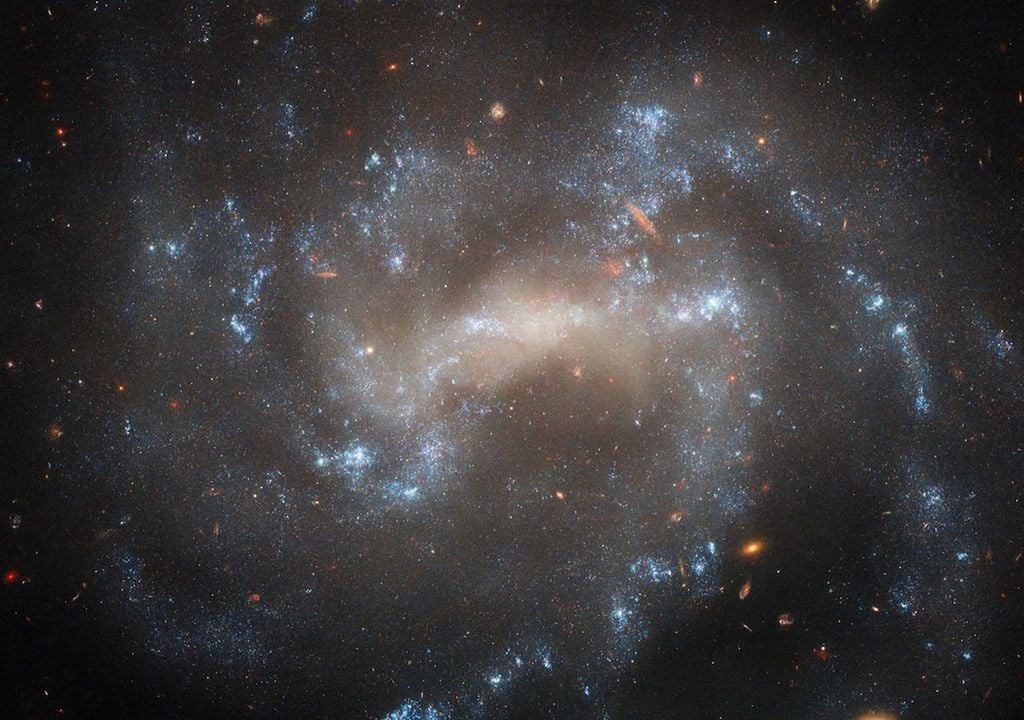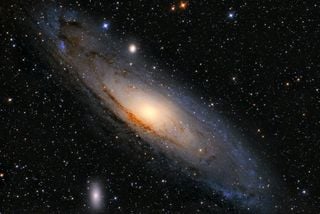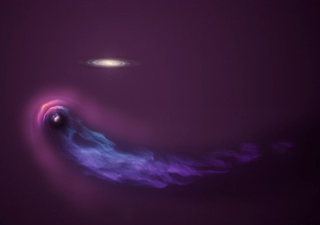Hubble telescope discovers a star that would have "faked" its own death in the galaxy UGC 5460

Until very recently, astronomers believed they had detected two supernovae, when it was probably a very different phenomenon: a luminous blue variable.
Just 60 million light-years away, in a corner of the vast cosmos, a permanent resident of the constellation Ursa Major , the spiral galaxy UGC 5460 shines and dazzles even the most veteran telescope, the hero of a thousand battles: the Hubble.
Unfolding a cosmic spectacle that defies our imagination, the Space Telescope website's Image of the Week shows what appears to be an enchanted whirlpool, where stars dance in an intricate ballet of light and color.
Combining four wavelengths, four facets of the same phenomenon, the light surprises us by revealing a magical central bar that, with its millions of combined stars, shines like a treasure hidden in the depths of the cosmic oceans .
The spiral arms, twisted by gravity, seem to embrace the secrets of infinity. At the same time, star clusters take the form of jewels, emerging with bright blue hues that disperse across the celestial canvas, giving a dramatic touch to the stellar background.
Hubble has gone hunting for an imposter in UGC 5460!
— HUBBLE (@HUBBLE_space) February 21, 2025
Access more space-themed .gifs at our giphy page: https://t.co/SL4SeKQgIS pic.twitter.com/0e4YpWaw9i
Ghosts also lie
Like someone passing by at the right moment in the photo, a big star from our own neighborhood appears in the upper left of the image, like an intruder at a party to which she was not invited.
Located just 577 light years away from us, it greets us with its golden glow , seeming to curiously observe the majestic spectacle unfolding around it, like a celestial guardian watching over the mysteries of the cosmos.
But the real jewels in the crown of UGC 5460 are a pair of recently appeared supernovae: SN 2011ht and SN 2015as . Two stellar explosions that, until recently, fooled us with their unparalleled brightness.
And after thinking, imagining and scrutinizing its darkest secrets, astronomers discovered the depths of an unprecedented cosmic deception, something that would leave an indelible mark on the galaxy and make it a prime target for Hubble .
Two similar objects, one huge difference
SN 2015as, a core-collapse supernova , is like the final gasp of a star that has given all its brilliance to the universe. This cataclysmic explosion occurs when the core of a star, much more massive than the Sun, runs out of fuel and collapses under its own gravity.

It is then that the Universe , in an act of creation and destruction, begins to rebound material away from the core, spreading its stellar essence in a splendid burst of light and energy, allowing researchers to delve into the enigmas of the cosmos.
SN 2011ht, on the other hand, could be a core-collapse supernova or perhaps an impostor called a luminous blue variable — rare stellar specimens that experience such powerful eruptions that they mimic supernovae, fooling even the most experienced observers.
Luminous blue variables emerge unscathed from these flares, defying the laws of stellar fate and reappearing as if they were home. That is why Hubble, with its keen and perceptive eye, will be searching for a stellar survivor at the location of SN 2011ht.
The identity of this cosmic explosion could finally be revealed , unraveling the mysteries surrounding these capricious stars that play with the fate and perception of those of us who observe them from our pale, distant blue dot: Earth.








